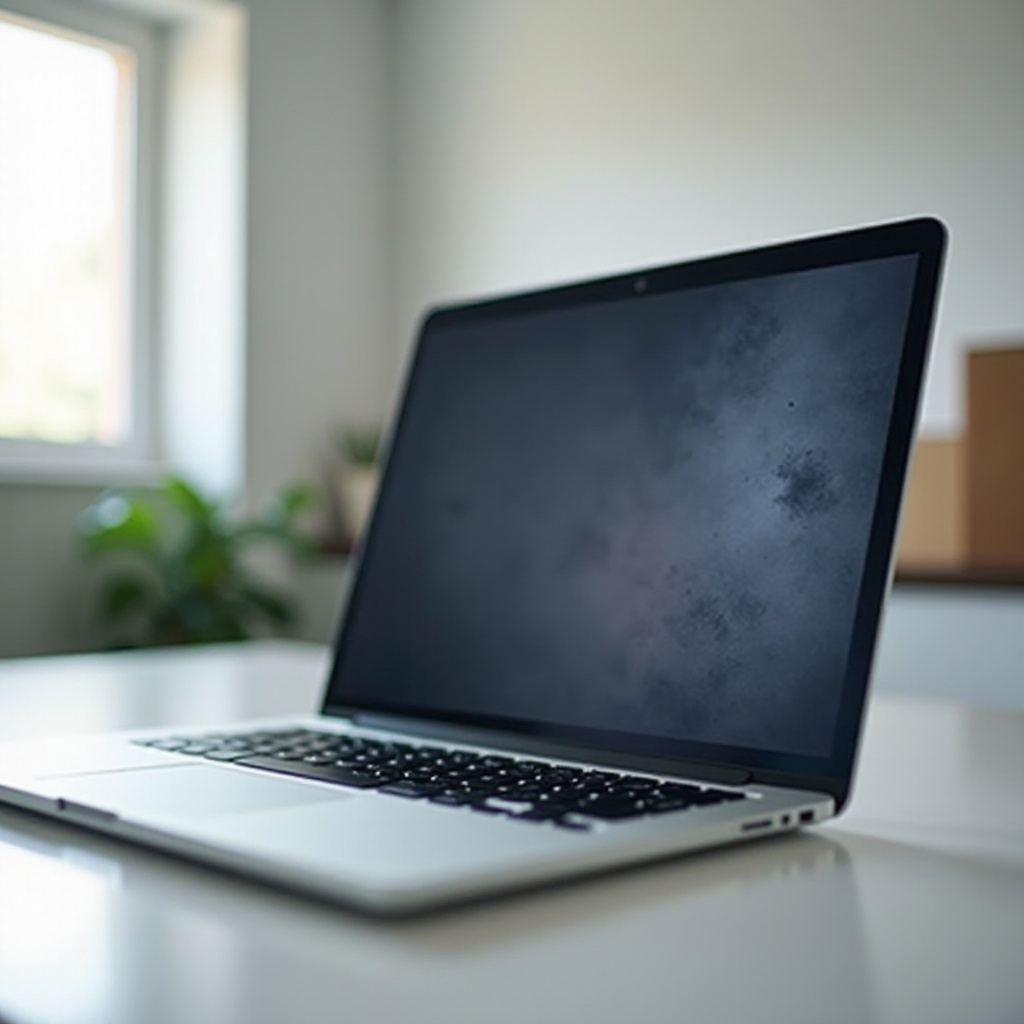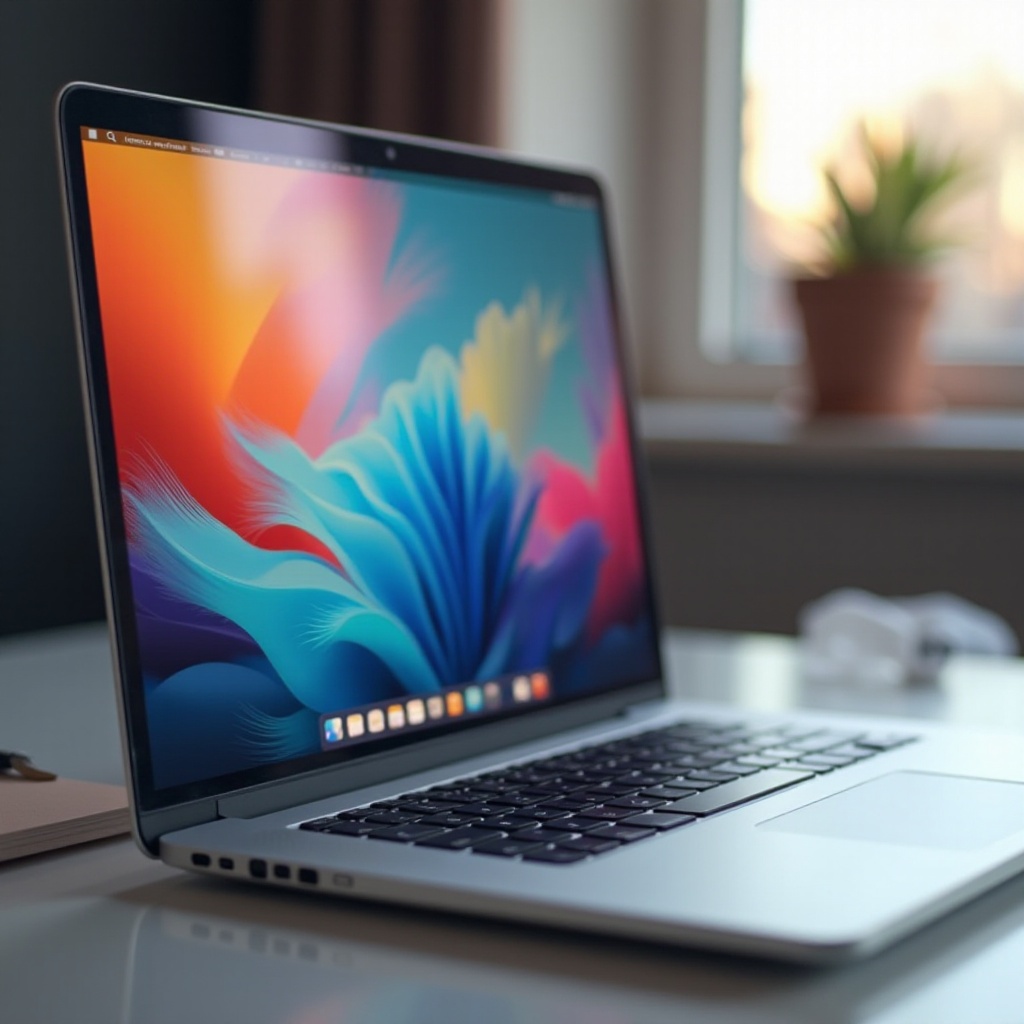Introduction
Laptop screen discoloration can be an annoying problem, impacting both your productivity and the overall experience of using your device. Understanding what causes this issue and how to address it is crucial for maintaining your laptop's functionality and display quality. This comprehensive guide will walk you through the common causes, DIY fixes, and preventative measures to avoid laptop screen discoloration.

Main Causes of Laptop Screen Discoloration
Laptop screen discoloration can arise from various issues, each requiring a different approach to fix.
Physical Damage
Physical damage is one of the most straightforward reasons for screen discoloration. Drops, impacts, or pressure on the laptop screen can cause internal damage that manifests as discoloration.
Overheating and Hardware Issues
Overheating can lead to hardware malfunctions, including problems with your laptop screen. Prolonged exposure to high temperatures can damage internal components, causing the screen to display colors inaccurately.
Software Glitches and Driver Problems
Sometimes, the issue isn’t physical at all. Software glitches or outdated display drivers can also result in screen discoloration. Ensuring your software is up-to-date can often resolve these problems.

Preliminary Diagnostic Steps
Before diving into complex fixes, it's essential to diagnose the problem accurately.
Quick Checks and Troubleshooting
- Restart Your Laptop: A simple restart can sometimes resolve minor glitches.
- Check External Connections: Ensure all external devices connected to your laptop aren't causing the problem.
Verifying Software and Driver Issues
- Update Display Drivers: Go to your laptop's device manager and update display drivers.
- Check for Software Updates: Make sure your operating system and any related software are up-to-date.
Inspecting for Physical Damage
Inspect your laptop thoroughly for signs of physical damage. Look for cracks, bends, or any other visible signs of impact that could affect display quality.
Fixing Common Laptop Screen Discoloration Issues
Once you've identified potential causes, proceed with the appropriate fixes.
Software and Driver Fixes
- Reinstall Display Drivers: Uninstall and then reinstall the latest display drivers.
- Adjust Display Settings: Navigate to your display settings to adjust color calibrations.
Adjusting Display Settings
- Go to your control panel or system preferences.
- Locate the display settings.
- Adjust the color calibration and brightness settings to see if this resolves the discoloration issue.
Physical Repair and Replacements
- Check Screen Connectors: Ensure the internal connectors to your screen haven't come loose.
- Replace the Screen: If all else fails, replacing the screen might be necessary, though this is better left to professionals unless you have technical expertise.
Preventative Measures to Avoid Screen Discoloration
Preventing laptop screen discoloration is always better than having to fix it.
Proper Care and Handling of Laptops
- Use a Screen Protector: Screens can get damaged by direct impact and daily wear. A screen protector can offer an extra layer of protection.
- Handle with Care: Always close the lid gently, and avoid placing heavy objects on top of the laptop.
Regular Maintenance and Software Updates
Keeping your laptop clean and up-to-date can prevent many of the common causes of screen discoloration.- Clean Your Laptop Regularly: Dust and dirt can accumulate and potentially damage screen components.- Update Software: Regularly check for software and driver updates to keep your system running smoothly.
Avoiding Overheating and Physical Damage
Overheating can lead to hardware malfunctions, including issues with your laptop screen.1. Use a Cooling Pad: To prevent overheating, use a cooling pad if you tend to run high-performance applications.2. Proper Ventilation: Ensure your laptop has good airflow and isn’t used on soft surfaces that block ventilation.

Conclusion
Laptop screen discoloration can be caused by a variety of factors, including physical damage, overheating, and software issues. By following the diagnostic steps, you can identify the problem and apply the appropriate fix, whether it's updating drivers, adjusting display settings, or repairing physical damage. Preventative measures, such as proper handling and regular maintenance, can help you avoid these issues in the first place. Always seek professional help if the discoloration persists or if you're unsure how to proceed with repairs.
Frequently Asked Questions
What should I do if my laptop screen turns pink or purple?
First, try restarting your laptop to see if the issue resolves itself. If the problem persists, check for updated display drivers or consider a system restore to a point before the discoloration occurred. If the problem still continues, it might be hardware-related, and seeking professional assistance would be advisable.
Can an HDMI cable cause screen discoloration on my laptop?
Yes, a faulty HDMI cable can cause screen discoloration. Try using a different HDMI cable or port to see if the problem resolves. If the discoloration only occurs with the HDMI cable connected, it may be time to replace the cable.
How much does it cost to fix a laptop screen discoloration?
The cost can vary significantly depending on the cause. Software fixes are typically free or low-cost if they involve driver updates. Physical repairs, such as replacing a damaged screen, can range from $100 to $300 or more, depending on the laptop model and whether you're performing the repair yourself or using a professional service.
